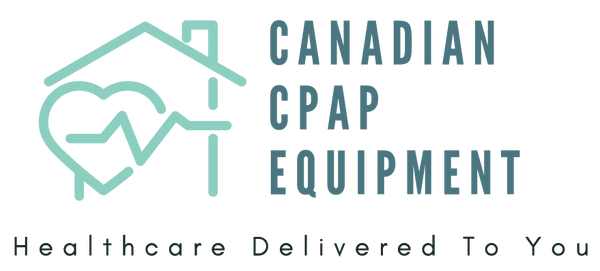Your CPAP (Continuous Positive Airway Pressure) machine is a vital tool in managing your sleep apnea, ensuring you get restorative sleep and mitigating serious health risks. Like any medical device, proper care and regular maintenance are crucial not only for its longevity and optimal performance but, more importantly, for your health and hygiene. If you are starting CPAP therapy or suspect you may have sleep apnea, consider taking a home sleep apnea test to ensure you are receiving the right treatment based on an accurate diagnosis. This guide provides essential tips to keep your CPAP system clean, functional, and safe.
Why Regular Cleaning is Non-Negotiable
Your CPAP equipment is in direct contact with your breath, skin, and the air around you. Over time, moisture, oils from your skin, dust, and airborne particles can accumulate, creating a breeding ground for bacteria, mold, and viruses. Regular cleaning prevents:
-
Infections: Respiratory infections, sinus infections, and skin irritations.
-
Reduced Effectiveness: Clogged filters or dirty masks can compromise the seal and air delivery.
-
Equipment Damage: Buildup can degrade materials and shorten the lifespan of your machine and accessories.
- Unpleasant Odors: A dirty system can develop a musty or unpleasant smell.
Daily Cleaning Routine
Certain components of your CPAP system should be cleaned daily to ensure optimal hygiene:
- CPAP Mask (Cushion/Pillows):
-
How: Gently wash the mask cushion or nasal pillows with mild soap (like baby shampoo or a specialized CPAP mask cleaner) and warm water. Avoid harsh soaps, as they can degrade the silicone.
-
Why: Removes facial oils, dead skin cells, and residue that can break down the mask material and compromise the seal.
-
Dry: Allow to air dry completely out of direct sunlight.
2. Humidifier Water Chamber:
- How: Discard any leftover water from the previous night. Wash the chamber with mild soap and warm water. For a deeper clean, you can use a solution of white vinegar and water (1 part vinegar to 4 parts water) once a week to prevent mineral buildup and disinfect.
-
Why: Prevents mold, mildew, and bacterial growth from stagnant water.
-
Water Type: Always use distilled water in your humidifier to prevent mineral deposits and extend the life of the chamber.
-
Dry: Allow to air dry completely.
Weekly Cleaning Routine
These components require a thorough cleaning at least once a week:
- CPAP Tubing (Hose):
-
How: Disconnect the tubing from the machine and mask. Wash with mild soap and warm water. You can use a long, narrow brush designed for CPAP hoses to ensure thorough cleaning. Rinse thoroughly.
-
Why: Removes condensation, dust, and any microbial buildup.
-
Dry: Hang the tubing to air dry completely, ensuring no water remains inside. Some people hang it over a shower rod or use a specialized drying stand.
2. Headgear:
-
How: Hand wash the headgear with mild soap and warm water. Avoid harsh scrubbing, which can damage the fabric.
-
Why: Removes oils, sweat, and dirt that can accumulate and cause skin irritation.
-
Dry: Lay flat or hang to air dry. Avoid putting it in a dryer, as it can damage the elastic.
Regular Replacement Schedule
Even with diligent cleaning, CPAP components degrade over time and need to be replaced. Adhering to a replacement schedule is crucial for optimal therapy and hygiene:
-
Mask Cushion/Pillows: Every 2-4 weeks (or as soon as you notice wear, leaks, or discomfort).
-
Disposable Filters: Every 2-4 weeks (or more frequently if you live in a dusty environment or have pets).
-
Reusable Filters: Every 3-6 months (wash weekly).
-
CPAP Mask (entire mask assembly): Every 3-6 months.
-
CPAP Tubing: Every 3-6 months.
- Humidifier Water Chamber: Every 6 months.
Note: Your insurance provider may have specific guidelines for replacement frequency. Check your policy.
Additional Maintenance Tips
-
Keep Your Environment Clean: A clean bedroom with minimal dust can help keep your CPAP equipment cleaner.
-
Avoid Direct Sunlight: Do not dry or store your CPAP components in direct sunlight, as UV rays can degrade materials.
-
Inspect Regularly: Periodically inspect your mask, tubing, and machine for any signs of wear, cracks, or damage. Replace components immediately if you notice any issues.
-
Travel Care: When traveling, ensure your CPAP machine is packed securely in a dedicated travel bag to protect it from damage.
-
Professional Servicing: Follow your machine manufacturer's recommendations for any professional servicing or maintenance.
By incorporating these simple cleaning and replacement routines into your daily and weekly habits, you can ensure your CPAP equipment remains hygienic, performs effectively, and continues to provide you with the restorative sleep you need for a healthier life.
Next Steps: Don't let your CPAP therapy hold you back from exploring the world! In our next post, we will share essential tips for traveling with your CPAP machine.

